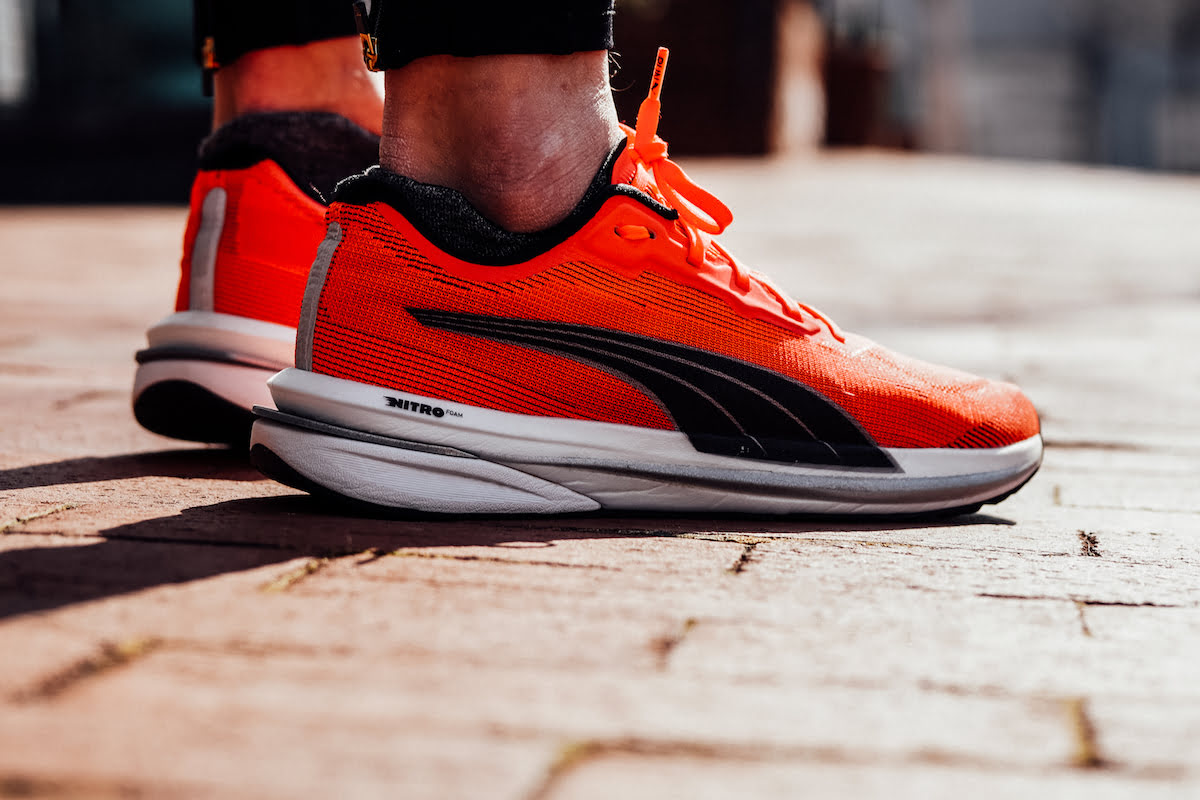Home>Training & Techniques>The Category Of Individuals Who Can Become Better Runners By Taking Naps


Training & Techniques
The Category Of Individuals Who Can Become Better Runners By Taking Naps
Published: February 27, 2024
Discover how training and techniques can help individuals become better runners by incorporating naps into their routine. Improve your running performance with this unique approach.
(Many of the links in this article redirect to a specific reviewed product. Your purchase of these products through affiliate links helps to generate commission for Therunningadvisor.com, at no extra cost. Learn more)
Table of Contents
The Benefits of Napping for Runners
Napping is often associated with relaxation and rejuvenation, but its benefits extend beyond simply combating fatigue. For runners, integrating naps into their routine can yield numerous advantages that contribute to enhanced performance and overall well-being. Here are the key benefits of napping for runners:
-
Improved Physical Recovery: Engaging in regular running sessions can exert significant stress on the body, leading to muscle fatigue and weariness. Napping provides an opportunity for the muscles to repair and recover, promoting faster healing and reducing the risk of overuse injuries.
-
Enhanced Mental Alertness: Running demands mental focus and endurance, and napping can serve as a mental reset, sharpening cognitive function and concentration. By allowing the brain to rest and recharge, runners can approach their training and races with heightened mental acuity.
-
Boosted Performance: Naps have been shown to enhance physical performance by reducing the perception of effort and increasing endurance. When runners incorporate naps into their routine, they may experience improved speed, stamina, and overall athletic output.
-
Stress Reduction: The demands of training and competition can elevate stress levels, impacting both physical and mental well-being. Napping serves as a natural stress-reliever, helping runners manage and alleviate the pressures associated with their sport.
-
Regulated Sleep Patterns: Consistent napping can contribute to better overall sleep quality, ensuring that runners obtain the necessary rest for optimal recovery and performance. By establishing a balanced sleep schedule, runners can mitigate the effects of sleep deprivation and maintain peak physical condition.
-
Enhanced Immune Function: Adequate rest is crucial for a robust immune system, and napping can bolster the body's ability to fend off illnesses. For runners, who are susceptible to the physical toll of intense training, napping can serve as a preventive measure against illness and support overall health.
Incorporating naps into a running regimen can yield multifaceted benefits that extend beyond physical recovery. By embracing the restorative power of napping, runners can optimize their training, performance, and overall well-being.
How Napping Can Improve Running Performance
Napping plays a pivotal role in enhancing running performance by offering a myriad of physiological and psychological benefits. The strategic incorporation of naps into a runner's routine can yield substantial improvements in various facets of their athletic endeavors. Here's a closer look at how napping can elevate running performance:
Physical Recovery and Muscle Repair
After rigorous training sessions or races, the body undergoes significant physical stress, leading to muscle fatigue and micro-tears. Napping provides an opportune period for the muscles to recuperate and repair. During sleep, the body releases growth hormone, which aids in the repair and regeneration of tissues, contributing to faster recovery and reduced muscle soreness. This accelerated physical recovery enables runners to approach subsequent workouts or competitions with rejuvenated muscles and enhanced strength.
Enhanced Cognitive Function and Focus
Running demands not only physical endurance but also mental fortitude and focus. Napping serves as a cognitive reset, sharpening mental acuity and concentration. By allowing the brain to rest and recharge, napping can mitigate the effects of mental fatigue, improving decision-making, reaction times, and overall cognitive function. This heightened mental alertness can be particularly advantageous during long-distance runs or races, where sustained focus is crucial for maintaining pace and executing race strategies effectively.
Regulation of Hormonal Balance
Quality naps contribute to the regulation of essential hormones, such as cortisol and adrenaline, which play a pivotal role in the body's stress response. By reducing stress hormone levels, napping can promote a state of relaxation and mental clarity, enabling runners to approach their training and races with a balanced hormonal profile. This equilibrium in hormonal levels can positively impact energy utilization, muscle recovery, and overall performance, creating an optimal physiological environment for running success.
Improved Endurance and Performance
Napping has been shown to enhance physical performance by reducing the perception of effort and increasing endurance. By incorporating naps into their routine, runners may experience improved speed, stamina, and overall athletic output. This boost in physical performance can be particularly advantageous during intense training phases or competitive events, allowing runners to push their limits and achieve peak performance levels.
In essence, napping serves as a potent tool for runners seeking to elevate their performance. By harnessing the restorative power of napping, runners can optimize their physical recovery, mental acuity, and overall athletic prowess, ultimately leading to improved running performance and enhanced competitive outcomes.
The Science Behind Napping and Running
The integration of napping into a runner's regimen is not merely a matter of anecdotal evidence or subjective experiences; it is substantiated by scientific research that delves into the physiological and cognitive mechanisms underlying the relationship between napping and running performance. Understanding the science behind napping and running sheds light on the profound impact that strategic periods of rest can have on an athlete's physical and mental capabilities.
At the core of the science behind napping and running lies the concept of sleep architecture, which encompasses the various stages of sleep, each with distinct physiological functions. During the sleep cycle, the body undergoes essential processes that are instrumental in facilitating physical recovery, cognitive consolidation, and hormonal regulation. Napping, when strategically incorporated, can optimize these processes, thereby enhancing a runner's overall performance.
One of the key physiological benefits of napping for runners is the promotion of muscle recovery and repair. During sleep, the body releases growth hormone, which plays a pivotal role in tissue regeneration and repair. This hormone aids in the restoration of muscle fibers, contributing to reduced soreness and enhanced muscular strength. Additionally, napping has been linked to the reduction of cortisol levels, a stress hormone that can impede muscle recovery and increase the risk of injury. By modulating these hormonal responses, napping creates an environment conducive to accelerated physical recovery and reduced susceptibility to overuse injuries.
From a cognitive standpoint, napping influences neural processes that are integral to mental alertness and focus, both of which are crucial for running performance. Research has shown that napping can enhance memory consolidation, learning retention, and reaction times, all of which are essential components of effective running. Furthermore, napping has been associated with improved mood regulation and stress management, factors that can significantly impact an athlete's mental resilience and overall well-being.
The scientific evidence supporting the benefits of napping for runners underscores the intricate interplay between sleep, physical recovery, cognitive function, and athletic performance. By leveraging the insights gleaned from sleep research, runners can strategically incorporate naps into their training and competition schedules, harnessing the restorative power of sleep to optimize their physical and mental capabilities.
In essence, the science behind napping and running provides a compelling rationale for athletes to embrace strategic periods of rest as a means to enhance their overall performance and well-being. By aligning their training regimens with the physiological and cognitive benefits of napping, runners can unlock their full potential and achieve peak athletic prowess.
Tips for Incorporating Naps into Your Running Routine
Integrating naps into a running routine requires thoughtful planning and strategic implementation to maximize their benefits. Here are practical tips for runners looking to incorporate napping into their training regimen:
-
Establish a Consistent Schedule: Set aside specific time slots for napping, ideally during the early afternoon when the body naturally experiences a dip in energy levels. Consistency is key to aligning the body's internal clock with the nap routine, optimizing its restorative effects.
-
Limit Nap Duration: Aim for short, targeted naps lasting between 20 to 30 minutes to avoid entering deep sleep stages, which can lead to grogginess upon waking. These brief naps can provide a quick energy boost and enhance mental alertness without disrupting nighttime sleep patterns.
-
Create a Relaxing Environment: Find a quiet, dimly lit space conducive to relaxation. Consider using a sleep mask and earplugs to minimize external disturbances and facilitate a tranquil nap environment. Additionally, adjusting the room temperature to a comfortable level can promote better sleep quality.
-
Practice Nap Visualization: Before napping, engage in relaxation techniques such as deep breathing or visualization exercises to ease into a state of restfulness. Visualizing serene landscapes or peaceful scenarios can help calm the mind and facilitate a more rejuvenating nap experience.
-
Incorporate Post-Nap Routines: Upon waking from a nap, engage in light stretching or a brief walk to reawaken the body and mind. This can help alleviate any residual grogginess and transition smoothly back into the running routine.
-
Monitor Caffeine Intake: Be mindful of caffeine consumption, especially in the hours leading up to a scheduled nap. Limiting caffeine intake can prevent interference with the body's natural sleep-wake cycle and promote better nap quality.
-
Listen to Your Body: Pay attention to your body's signals and adjust the nap schedule as needed. If feeling excessively fatigued, consider prioritizing rest over a scheduled run to prevent overexertion and potential injury.
-
Evaluate Nap Impact on Nighttime Sleep: Monitor the effects of napping on nighttime sleep patterns. If naps consistently disrupt nocturnal rest, consider adjusting the timing or duration to strike a balance between daytime rest and nighttime sleep quality.
By implementing these tips, runners can effectively integrate napping into their training routine, harnessing the restorative power of sleep to optimize physical recovery, mental acuity, and overall running performance.
Potential Drawbacks of Napping for Runners
While napping can offer substantial benefits for runners, it is important to acknowledge the potential drawbacks associated with incorporating daytime sleep into a training regimen. Understanding these drawbacks can help athletes make informed decisions about the role of napping in their overall running routine.
One notable drawback of napping is the potential for sleep inertia, a phenomenon characterized by grogginess and disorientation upon waking from a nap. This transitional state, which can last for several minutes to half an hour, may impede immediate physical and cognitive performance. For runners, experiencing sleep inertia after a nap can hinder the readiness to engage in training sessions or races, particularly if rapid alertness and agility are required.
Another consideration is the impact of napping on nighttime sleep patterns. Extended or late-afternoon naps may disrupt the body's natural circadian rhythm, leading to difficulty falling asleep at night or experiencing fragmented sleep. This can result in overall sleep deprivation, counteracting the restorative benefits that napping aims to provide. Additionally, individuals who struggle with insomnia or other sleep disorders may find that napping exacerbates their nighttime sleep challenges, leading to a cycle of disrupted rest.
Furthermore, some runners may encounter scheduling conflicts when attempting to integrate naps into their daily routine. Balancing work, family commitments, and training schedules can make it challenging to carve out dedicated time for napping. As a result, athletes may feel pressured to choose between napping and other essential activities, potentially adding stress and disrupting overall time management.
In certain cases, individuals who are prone to migraines or headaches may find that napping triggers or exacerbates these conditions. While napping can be a remedy for some types of headaches, it may act as a trigger for others, leading to discomfort and reduced well-being for affected runners.
Lastly, excessive reliance on napping as a coping mechanism for inadequate nighttime sleep or chronic fatigue may mask underlying health issues that require attention. Instead of addressing the root causes of fatigue, consistently resorting to napping may perpetuate a cycle of temporary relief without addressing the underlying factors contributing to diminished energy levels.
Acknowledging these potential drawbacks underscores the importance of approaching napping as a strategic tool within a comprehensive approach to rest and recovery. By carefully considering the timing, duration, and frequency of naps, runners can mitigate these potential drawbacks and harness the benefits of napping while minimizing its potential adverse effects on their overall well-being and performance.
Conclusion: The Role of Napping in Becoming a Better Runner
Incorporating strategic napping into a runner's regimen can significantly contribute to their journey toward becoming a better athlete. By harnessing the restorative power of napping, runners can optimize their physical recovery, mental acuity, and overall performance. The multifaceted benefits of napping encompass improved physical recovery, enhanced cognitive function, and stress reduction, all of which are instrumental in elevating running performance.
Napping serves as a catalyst for accelerated muscle repair and regeneration, mitigating the effects of physical stress induced by rigorous training sessions and races. This enhanced physical recovery not only reduces the risk of overuse injuries but also primes the muscles for subsequent workouts, enabling runners to approach their training with rejuvenated strength and resilience.
From a cognitive perspective, napping acts as a mental reset, sharpening focus, and enhancing decision-making abilities. The restorative effects of napping on cognitive function are particularly valuable during long-distance runs or competitive events, where sustained mental acuity is essential for maintaining pace and executing race strategies effectively.
Moreover, napping plays a pivotal role in stress reduction, providing runners with a natural mechanism to manage the pressures associated with training and competition. By alleviating stress, napping contributes to a balanced mental state, fostering a positive mindset that is conducive to optimal performance.
The integration of napping into a runner's routine is not merely a matter of anecdotal evidence; it is substantiated by scientific research that underscores the profound impact of strategic periods of rest on an athlete's physical and mental capabilities. By aligning their training regimens with the physiological and cognitive benefits of napping, runners can unlock their full potential and achieve peak athletic prowess.
In essence, napping is a valuable tool that empowers runners to optimize their physical recovery, mental acuity, and overall well-being, ultimately leading to improved running performance and enhanced competitive outcomes. By embracing the role of napping as a strategic component of their training regimen, runners can embark on a path toward becoming stronger, more resilient, and ultimately better athletes.














